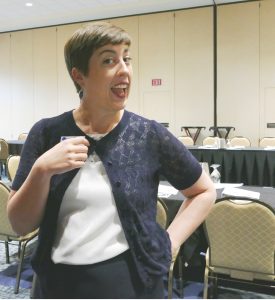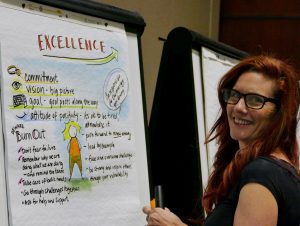1) When you need everyone (including you) to be fully engaged in the content, decision making, brainstorming, or other activities this meeting will entail.
Decision making is especially prone to unintentional influence when the leader is facilitating the meeting. There are tools for anonymous polling or techniques for blind voting, but that can create awkwardness because it brings the issue of power dynamics to the forefront and puts a spotlight on it. The facilitator will focus on the structure and process to ensure the meeting keeps moving and is running efficiently.

2) When you assume a new role as leader of a group.
Another situation where it really helps to hire a facilitator is when you are the new leader in town. Typically, when you have just been hired or promoted, then all eyes are on you. You can both deflect attention and show humility by stepping out of the front-of-the-room role and letting a trained facilitator guide the meeting. One of the fears employees express about a new leader is, “Will they listen to us?” Employees are often concerned that a new leader will not value their knowledge and experience. They get anxious imagining that the new boss is going to immediately start pushing their own agenda and changing things. When you let a facilitator take the front-of-the-room role, you have an opportunity to sit in the back of the room (or in another strategic position) where you can listen, observe, and take the temperature of the room.

3) When you are doing strategic planning.
Other candidates for facilitation include activities like strategic planning, new product or program development, or anything else where you need to see the issue from different perspectives, make complex decisions with far-reaching consequences, or consider data and opinions outside of those in the room. In all of these cases, you need to use alternative methods to generate new ideas or gain new insights. An experienced facilitator can help you with meeting design (ahead of time) and facilitating specific activities on meeting day that will guide your group through the collaborative design you have developed.

You can think of an important meeting with your staff like a wedding. If you are the bride, groom, or another member of the wedding party, you want to be free to celebrate the day and be fully present and engaged. You don’t want to be checking place settings or rearranging table assignments. You want to be greeting guests who traveled from far away to celebrate with you. You want to be creating a welcoming atmosphere and achieving your desired outcome – becoming legally wed in the presence of family and friends. This is why so many people choose to hire a wedding planner or a day-of coordinator for their wedding.
In the same way, an experienced facilitator can be an important strategic partner to help you ensure that you set the desired tone for your meeting, achieve your desired outcomes within your time constraints, and can be fully engaged in the meeting itself.
Get the toolkit!
Do you lead meetings? I have put together this free toolkit to help you energize your team through more productive staff meetings. Enter your name and email and click get the toolkit to have it delivered to your email as a PDF.

